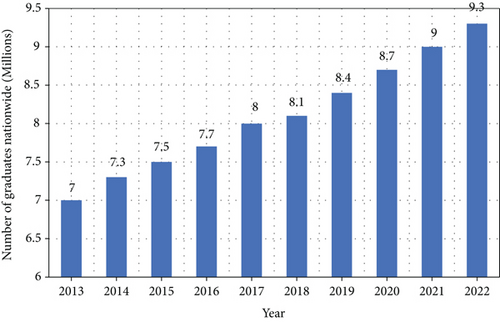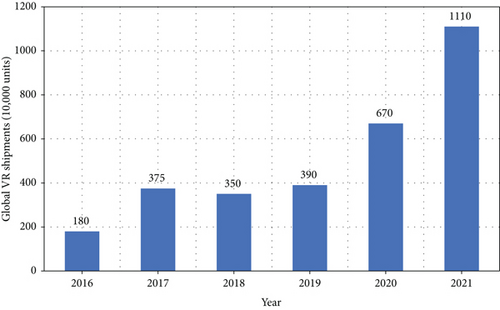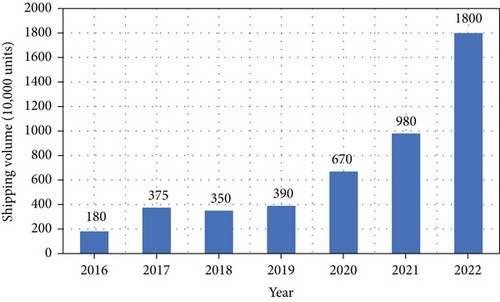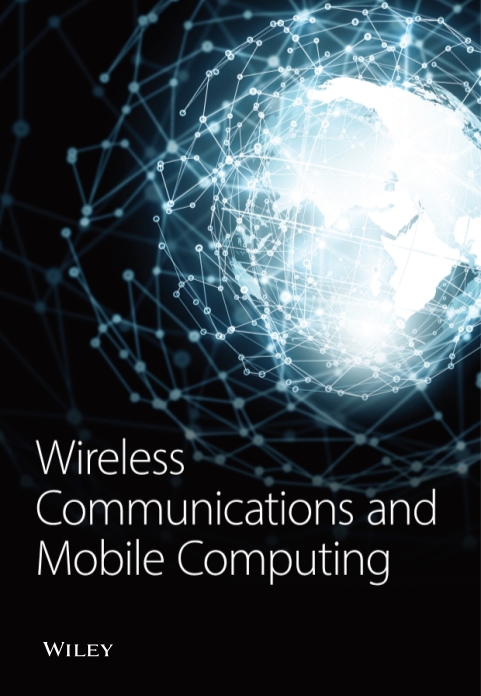[Retracted] Construction of Interactive Higher Education Model Based on “VR + Internet”
Abstract
With the popularization of Internet and VR technology in various fields, people’s lifestyle has gradually changed, and the field of educational engineering is constantly innovating and developing. Among many educational technologies, VR virtual reality technology is particularly eye-catching. The rapid development of VR technology has created new opportunities for all fields. Realizing VR in the industry can promote the development and progress of the industry itself. Network education is the product of the combination of information technology and computer technology. The combination of VR technology and Internet will inevitably promote the further development of interactive college education mode. China is facing the crisis of network education reform and development, but the combination of internet and education is the objective need of internet development and education development. The interactive mode of higher education not only promotes the innovation of higher education mode but also optimizes and innovates the structure of interactive education field. The combination of VR technology and Internet can make students better integrate into the teaching situation, improve learning efficiency, and effectively achieve the educational purpose. Therefore, it can be predicted that the interactive college education mode is an inevitable trend in the development of interactive education. Based on this, this paper first makes a brief analysis of VR technology and the Internet, then examines the significance of realizing the combination of the two, and finally puts forward the strategies and methods to realize the combination of interactive education and VR technology.
1. Introduction
The advent of the Internet has promoted the networking of various industries. With the rapid development of the Internet, it has had a great impact on education, education system, education methods, and talent training ideas. The combination of various industries and the Internet has become a new direction for the development of various industries [1, 2]. That is to say, the Internet can be used as a platform to create virtual reality. The combination of interactive education and VR technology can create a situation of virtual reality education, in which students can integrate and receive education, so as to gain better educational results [3, 4]. By comprehensively and effectively promoting the smooth development of online teaching activities, students’ ability to distinguish and extract network information and their comprehensive ability can be effectively improved. And the number of college graduates in China is increasing year by year, as shown in Figure 1.

Therefore, today’s mature VR technology should be effectively combined with college education to give full play to better educational advantages. Interactive education supported by modern information technology paves the way for the rational distribution of educational resources and the movement of centralized users to fragmented learning time and brings infinite possibilities for the development of education [5–8]. A more liberal education model will inevitably advocate higher requirements of users for self-discipline and compliance, and the intensity of this requirement shows a younger trend. However, in related practice, users are easily distracted by unconstrained interactive education, and it is difficult to ensure the teaching quality [9, 10]. The mature development of VR technology has brought us the key to the success of interactive education. The integrated development of VR technology and interactive education will effectively promote the great changes and excellent development of the whole education industry [11–13].
2. VR Technology and Interactive Education
2.1. VR Technology
VR technology refers to virtual reality technology, which is a technology that combines computer technology with artificial environment and simulates and generates a three-dimensional virtual world that makes users feel that they are really immersed in it. In the three-dimensional space, when users move their bodies, VR head display will bring human consciousness into the virtual world [14, 15]. At this time, the scenes, characters, and objects people see are all fake and virtual reality, so VR technology is also called virtual reality technology. Applications developed based on VR technology also occupy a large share of the market in today’s society. The market size of VR-based applications is shown in Figure 2.

VR technology has three basic characteristics: first, immersion, that is, users can master related equipment and enter the virtual environment, which is almost the same as the real world and will not make people feel incongruous [16, 17]. The second is interactivity, which is reflected in the fact that users can interact with the virtual three-dimensional environment when they are in the virtual environment. That is to say, the virtual three-dimensional environment can be changed by external control, and the information provided by the change affects users through the three-dimensional environment. Third, it is imaginative, that is to say, the VR environment can change the three-dimensional virtual scene according to the change of the thinking state of the user’s cerebral cortex and constantly change according to the user’s imagination [18, 19].
2.2. Interactive Education
With the continuous development of science and technology, Internet technology has entered all fields of society. In modern society, the characteristics of network communication, sharing, and high efficiency make it easier for students to receive education, which provides a lot of convenience for students and teachers. Interactive education is the product of the Internet age, which is to connect education with the Internet and form a brand-new educational model. Interactive education has changed the backward situation of traditional education and created a more open and efficient education platform [20, 21].
According to the development of interactive education, it shows many characteristics. First, open and interactive education is open to all network users. There are no restrictions on age, race, educational background, etc. As long as you want to learn, you can learn the corresponding content. Second is interaction. The biggest difference between interactive education and traditional education is that interactive education can achieve good interaction, which is unmatched by traditional classrooms. Third is autonomy. Interactive education has a strong autonomy for students, that is, they can choose what to learn and also choose the learning period. The combination with Internet education can improve the teaching efficiency of teachers and the learning efficiency of students.
3. The Construction of Interactive College Education Model
3.1. Interactive Mode of Higher Education Ideas
In recent years, Internet technology has been rapidly integrated into various fields including higher education, which means that today’s society has entered the era of “interactive higher education.” What follows is the emergence of various forms of online courses and educational resources such as high-quality courses, online courses, micro-courses, massive open online course, and high-quality resource sharing courses. However, the resources of the abovementioned online courses are still the same as before, with videos, pictures, and animations as the main forms. Therefore, they can only be dominated by passive educational resources, with two-way immersive users providing the perception perspective.
Nowadays, how to effectively implement education has become an important problem to be solved urgently. Education resources are an important part of interactive college education mode, an indispensable part of professional training system, and a prerequisite for outstanding performance in college education and teaching. In the process of constructing interactive college education mode, teachers must collect, process, organize, and fully use all kinds of teaching resources, which can implement teaching integrated with teaching process.
Many majors in colleges and universities need to design a system structure model combining teaching resources. Establish a platform to carry the unified educational resources, classify and archive the unified educational resources, and finally formulate the reference standards for constructing the resource system, and clarify the implementation and management methods for constructing the unified educational resource system. Establish a system integrated educational resource management mechanism, take the major as the core, classify the resources according to the project modules and course types, reorganize the main course contents, and determine the task of teaching courses according to the internal logical structure of the main resources. The open architecture aims to promote the sharing of educational resources among schools, schools, school teachers and students, and enterprise employees. Therefore, the construction of interactive higher education model reflects the characteristics of integrated educational resources.
3.2. The Construction Path of Interactive College Education Model
Families, schools, enterprises, and social forces unite to form a number of political parties to help educate people. Based on modern information technology, as the main backbone, schools will establish a series of effective online teaching exchange platforms. As a supplement, family, enterprises, and social forces will provide education, technology, and service platforms to ensure the smooth development of curriculum teaching. At the same time, with the help of information technology and virtual reality technology, the teaching resources with basic theoretical knowledge are constructed, and the practice modules related to the course content are integrated to form an online and offline integrated professional course.
Combining the characteristics of higher education with the application of information-based education, this paper analyzes the online and offline education of courses and gives full play to the role of the third-party education cloud platform. The construction and combination of course resources are the combination of the third-party education cloud platform with theoretical knowledge and virtual simulation. Combined with practice and field operation, students can carry out the simulated actual operation with the help of virtual simulation platform.
3.3. The Significance of Interactive College Education Model
The significance of the interactive mode of higher education is mainly reflected in the following aspects: first, the combination of VR technology and Internet technology with education can enrich the current mode and content of higher education and promote its progress and development. Through the combination of VR technology and education, students have a strong feeling of focusing on this and integrating into learning activities. Global VR shipments are shown in Figure 3.

Among them, the global VR head display shipments are shown in Figure 4.

Second, the combination of VR technology and Internet technology with education can fully stimulate students’ enthusiasm for learning. Students are always interested in new things, but their interest will naturally decrease with time. The combination of VR technology, Internet technology, and education depends on the bidirectional and imaginative nature of VR technology itself, so students can always get novelty and keep long-term attention in VR+ interactive educational environment.
Finally, the combination of VR technology and interactive education can realize the three-dimensional display of relevant knowledge and the virtual connection of students. For example, when demonstrating chemical knowledge, VR technology can be used to build a virtual three-dimensional model, and students can be placed in the model for learning, which greatly expands the depth of knowledge and makes it easier for students to learn deeply.
3.4. The Combination of VR and Internet Technology and Education
To combine VR and Internet technology with education, we need to combine the two concepts to form a new concept of interactive college education mode. In the process of continuous change and progress of college education mode, the interactive college education mode composed of VR + Internet technology can fully display the characteristics and advantages of immersion learning. Therefore, as the future trend of higher education mode, research and discussion on interactive learning and education will certainly play an effective guiding and exemplary role in the combination of VR technology and Internet technology and education. Therefore, everyone should recognize the advantages and disadvantages of interactive education and the changes that the combination of VR and Internet technology may bring to the educational model of colleges and universities.
The introduction of VR technology makes interactive education more novel and rich. As far as the present situation is concerned, the biggest shortcoming of general interactive education is the lack of supervision of students, which will greatly reduce their learning effect. VR technology can strengthen the supervision of students’ learning state. Therefore, creating a virtual interactive educational environment based on VR technology can enable students to concentrate on their study in the virtual environment and accept supervision at the same time. In addition, VR technology can be used to automatically generate experimental steps, calculation results, data models, etc., so as to improve learning efficiency and solve problems in traditional teaching.
4. The Development Direction of Interactive College Education Mode
4.1. VR Technology Pushes the Field of Education to a New Mode
First of all, the interactive education mode breaks the traditional concept of higher education mode and transforms the single education mode into a free and flexible learning method. The combination of VR technology and Internet technology with education mode has solved many problems of interactive education mode. The combination of Internet technology and VR technology has brought new visual experience to students. VR simulates learning and teaching situations, guides students into virtual learning environment, and simulates teachers and students talking and learning with each other. The combination of VR Internet technology and education mode not only stimulates students’ curiosity but also enables students to keep fresh experiences in VR and interactive education mode, so the novelty of learning will last.
Knowledge will also be displayed to students more clearly and stereoscopically through VR technology, so that students can have a deeper understanding of the learning content. For example, VR technology is widely used in various professional education, so the advantages of VR technology are obvious in various professional courses. In the course research of petrochemical technology, the system can create virtual petrochemical experiment database for students. Through simulation training, we can understand the operation specifications and processes of petrochemical enterprises, master the related systems of petrochemical products, and cultivate high-quality technicians needed by the forefront of petrochemical enterprises.
4.2. Update the Concept of Interactive Education
At present, the interactive education mode has been widely used in all aspects of teaching, but many people are still influenced by the traditional mode and think that it is more useful to stick to the traditional education mode. In addition, some people hesitate between traditional education and interactive education and are in a wait-and-see state. In fact, the interactive education model has some advantages and disadvantages, which completely separates the relationship between education and learning. I think the time and learning methods of interactive education are more free, but I feel that the interactive education mode is not as humane as traditional teaching. The interactive mode of higher education completely breaks the concept of traditional education and makes people who hesitate more confirm and recognize the advantages of interactive education.
Due to various problems such as experimental devices, venues, and funds, Internet distance education cannot carry out traditional teaching experiments, so it is necessary to set up some virtual scenes and even virtual laboratories through VR technology. For example, majors such as cosmetic technology and oil refining technology can freely conduct various virtual experiments in the virtual laboratory, learn various cosmetic formulas and oil refining virtual experiments, and obtain relevant results and experiences, so as to deepen their understanding and experience of the learning contents. The emergence of VR technology makes up for the lack of teaching resources in interactive education, so that students can conduct various experiments anytime and anywhere and experience the most realistic experimental process. For example, in the research on the related technologies of new energy vehicles, VR technology is used to create a virtual three-dimensional new energy vehicle model, introduce the virtual new energy vehicle model to students, and enable students to more intuitively understand and experience the characteristics and related technologies of new energy vehicles through close observation.
4.3. Application of Interactive Education in Different Industries
Because the state attaches great importance to safety accidents, petrochemical enterprises have higher and higher requirements for emergency training. However, the actual training cost is too high, and the safety risk is also very high. Therefore, an emergency training VR system simulating the disaster scene is developed through VR technology, and the participants can implement emergency response training in the virtual reality scene through human interaction technology. Students can enter the virtual learning environment through VR technology, and worry about learning will make students focus more on the learning process, so as to improve their own behavior, regulate, and restrict and obtain a good learning experience and higher learning efficiency. Therefore, students will also be more inclined to choose the interactive education mode.
In the design of simulated automobile, virtual reality is used to simulate the driver’s perspective before and after driving the vehicle to ensure that the internal and external appearances of the vehicle are consistent with the design intent. The process of simulating automobile parts assembly is to use 3D technology to model and simulate the parts and their components, so as to determine whether there is any problem in the assembly relationship between the parts. At this time, the operator in the virtual scene is just like on the spot.
VR technology is also widely used in computer games. Through computer technology, the virtual three-dimensional game scene is created by using hardware devices and multisensor interaction technology. Integrating VR technology into computer games can bring this immersion to users of all ages. It is suitable for teenagers to choose more thrilling virtual games. Adults at work, on the other hand, are suitable to choose more relaxed games after work, or slightly more relaxed games, such as golf and archery. Games in virtual reality can not only help relieve the pressure of users but also bring a lot of unprecedented fun to users.
4.4. Interactive Education Mode and Traditional Education Mode
Thanks to the role of VR technology, today’s educators can fully feel the advantages of interactive education mode in modern colleges and universities. In the interactive education mode, creating a good learning environment for students through VR technology can enable students to learn more in-depth knowledge and obtain better educational results compared with the general teaching situation. Therefore, it is necessary to change the past educational ideas, improve educators’ attention to VR technology, and effectively promote the smooth development of the current interactive education mode in colleges and universities, so as to improve the development efficiency of VR technology industry.
At present, many people are more inclined to the traditional education mode because they are addicted to the traditional classroom atmosphere in the traditional education mode. While others are in a wait-and-see state, hesitating between traditional education and interactive education. Although interactive education has unlimited teaching time and freer learning methods and is not as boring and inefficient as traditional teaching, it separates learning from teaching, which is one of the shortcomings of interactive education mode.
4.5. Innovation of Interactive Education Mode
Interactive education is very different from traditional education mode, which can effectively promote the progress of education and learning and promote students to adopt more flexible and free learning methods. Therefore, VR technology promotes the continuous innovation and optimization of interactive education mode. There are some problems to be solved in the current teaching activities, such as in many teaching processes, students’ learning effect will be affected because of their lack of self-discipline and the lack of teacher supervision.
VR technology can provide students with a more humanized learning environment by simulating teaching and learning scenes. In addition, all kinds of knowledge expansion content obtained through VR scenes can improve students’ overall learning results. In a relatively harmonious and friendly learning environment, students can learn more knowledge and content in a more relaxed way. At the same time, students can communicate with teachers and classmates through VR technology to check and accept the learning results. The construction of interactive education mode in colleges and universities has effectively promoted the smooth development of teaching activities and provided teachers and students with more efficient teaching and learning methods.
Network education transforms the single teaching mode of traditional education into a more flexible and free learning mode. The interactive college education mode based on VR technology can easily solve the common problems in mutual education, such as students’ unconstrained, teachers’ insufficient supervision, and boring learning content. Especially in experimental courses, English courses, and other related courses, the advantages of VR technology are obvious. In the experimental course, it can set the program in advance and then explain the experimental steps, process, and results to avoid human error. When learning foreign language courses, the system can set up a virtual language atmosphere for students, so that students can be in the language atmosphere anytime and anywhere. In the architecture course, students can instantly transform the design drawings into virtual three-dimensional high-rise buildings and deeply experience various changes brought about by parameters. In such a virtual environment, the interactive education supported by VR technology will inevitably solve the problems of insufficient educational resources and boring learning methods in traditional education.
5. Conclusion
The combination of VR and Internet technology provides new technical support for interactive college education mode. This will further improve the mode and content of interactive education. VR technology provides a clear learning environment and environment for students, enabling them to actively participate in the virtual learning environment. This can stimulate students’ interest in learning and achieve educational goals. Colleges and universities train thousands of talents every year, so we should attach importance to interactive college education and strive to combine VR and Internet technology with interactive college education mode. Colleges and universities should continue to study the advantages of VR technology in education, invest more money in VR technology, implement virtual reality education methods, and use VR technology to improve teaching efficiency.
The practical operation of interactive educational activities needs to be realized by effectively using scientific and reasonable teaching methods and means and make full use of the advantages of VR technology to improve the overall learning effect. Through VR technology, create a brand-new concept of interactive education, and innovate interactive education mode to improve students’ enthusiasm for learning. At the same time, it meets the needs of online and offline learning. By combining VR technology with the Internet, the traditional passive teaching resources are transformed into active teaching resources, which improves the skills of students and the teaching level of teachers.
The construction of interactive education mode in colleges and universities will greatly promote the combination of “teaching” and “learning” between teachers and students and realize the combination of online and offline, reality and virtual, theory and practice, self-improvement, and social service. When students study, they can find the resources they need in the virtual environment, which greatly improves the learning efficiency and saves a lot of time.
Conflicts of Interest
The authors declare that they have no conflicts of interest.
Acknowledgments
The authors would like to show sincere thanks to those techniques who have contributed to this research. The authors would like to thank the financial supports from Humanities and Social Science Planning Project of Universities in Jiangxi Province of the year 2020 “Research on virtual and practical teaching methods of Ideological and Political Theory courses on the basis of VR in universities” (Grant no: JC20111) and Planning Project of University Party Construction in Jiangxi Province of the year 2020 “Research on Pattern Construction of VR+ Intelligent Party Building Positions” (Grant no: 20DJYB049).
Open Research
Data Availability
The figures used to support the findings of this study are included in the article.




